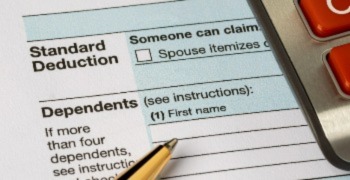
What your tax team needs to know about the difference between real and personal property
If you’re part of a corporate tax department, there are plenty of resources providing information about tax issues and strategies related to real property, but few doing the same for personal property — even though personal property offers similar opportunities for tax savings.
To help with strategizing on both fronts equally, we’ll begin by defining each term at a basic level, then highlight the differences between real and personal property that are relevant to tax practice.
What’s the difference between real and personal property?
In business, real property is property that includes real estate (land and buildings) and anything affixed to the land. For example, real property might be buildings (a factory building, an office building, a warehouse, or a storefront), land, mineral rights, and crops, among other things. Real property is permanently fixed and cannot be moved.
Personal property refers to movable items owned by your business. It includes everything from small office supplies (like pens and staplers) to furniture (chairs and desks) to computers and electronics to heavy machinery and equipment. There are further distinctions for both concepts, which we’ll discuss below.
Real and personal property taxes: What you need to know
1. There are 12 states that do not tax business personal property.
They are: Delaware, Hawaii, Illinois, Iowa, Minnesota, New Hampshire, New Jersey, New York, North Dakota, Ohio, Pennsylvania, and South Dakota. To note: Certain assets of utility systems in Minnesota and certain oil and gas refineries and utilities in North Dakota may be traditionally considered personal property but are otherwise taxable.
If you’re not already rooted in a particular state, or if you’re planning on expanding your operations, choosing a state that doesn’t tax business personal property could have a real impact on your business.
If you’re planning on building a factory that will include high-value machinery, for example, operating in a state that doesn’t tax business personal property could mean you retain a significantly greater amount of money every year. And since filing personal property returns is one of the most complicated pieces of the property tax cycle, it will also remove a sizable chunk of your tax team’s workload.
2. Personal property requires filing a return; real estate does not.
Real property is taxed everywhere. An assessor will estimate the value of your real property and send you a notice stating the valuation amount and how much of it is taxable. You’ll then receive a real property tax bill in the mail with the amount due.
Personal property taxes are more complex. You’re responsible for managing your assets (which includes figuring out their value individually, tracking them between your multiple office locations, determining their asset class and taxability, applying the correct depreciation, and finally calculating their value).
You then have to prepare and file a return, after which you’ll get an assessment notice that includes an assessor’s estimates of the market, as well as assessed and taxable values of your assets. And finally — you’ll receive a tax bill.
Both types of property tax can be appealed if you believe you’ve been assessed unfairly.
3. Real estate values appreciate; personal property assets depreciate.
In general, real property values increase in value over time, either due to an increase in demand (and declining supply) or because of inflation or changing interest rates. Personal property assets depreciate, or decline in value over time, because they wear out the longer you use them.
Part of managing your assets is determining how much depreciation to apply to them, which is detailed on depreciation schedules that vary by tax jurisdiction.
4. Real estate notices include value breakouts; personal property notices do not.
Your real property tax notice will indicate value amounts for each piece of real property your business owns, so you can see how much your land, buildings, and other miscellaneous property holdings are worth. In contrast, your personal property tax notice typically lists one amount — the total valuation of your personal property assets as a whole.
If you require more detail on your personal property then you may be required to contact the assessor directly.
5. The methods of valuation for appeals differ for real and personal property.
Appeals for real property involve using one or more commercial property valuation methods to determine the actual value of buildings, land, and other fixed assets. You could, for instance, compare your property to other similar properties, or determine how much it would cost to replace the asset if you had to do so today. Whatever method yields the lowest amount is the one on which you’d base your appeal.
Appeals for business personal property usually center on depreciation or obsolescence. Depending on how fast one or more assets are depreciating, the schedule used by the assessor may or may not be keeping pace. Or, depreciation may occur for functional or technological reasons the assessor isn’t aware of, a scenario that could also form the basis for an appeal.
6. Both real and personal property valuations can have tangible and intangible elements, and intangible assets are typically not taxable.
Tangible assets are those that have a physical form; intangible assets have no physical form but do have value, for example, patents, trademarks, customer relationships, FCC licenses, etc.
In most states (though not all), intangible assets are tax exempt. In the states that do tax intangible assets, the companies for which this category would apply tend to be those whose assets cross county lines — like telephone companies, pipeline companies, wireless companies, etc.
Keep in mind that if your real property is located in a jurisdiction that does not tax intangibles, you need to take this into account by extracting the value of intangible elements (like brand value, for instance) from your assessment calculations.
7. While the value of real property is tied heavily to location, personal property values are derived from a broad analysis of factors related to the assets.
Where real property is located can impact its value even if nothing else about it changes. Personal property values, on the other hand, are derived from a combination of factors, including an asset’s age, classification, functionality level, and also location. Thus, personal property requires a more extensive level of asset management than real property.
8. Both real property and personal property have exemptions and abatements, but they differ by type.
Property tax exemptions place a limit on taxable value; abatements reduce the amount of taxes owed. Both concepts can be applied to real property and personal property, though in different ways.
Applying tax exemptions for personal property requires excluding a portion of the exempt asset cost from the return (e.g., removing the cost of software from the total cost of a laptop); whereas, for real estate exemptions the value of the exempt asset must be deducted from the total value (e.g., removing intangible value of the leases by subtracting the fee simple value from the leased fee value).
As for abatements (or incentives) each asset class (real or personal) may have its own specific rules, so any adjustment must be applied as originally drafted and agreed upon by the jurisdiction and the taxpayer.
9. The deadlines for real and personal property tax appeals and payments are different.
Many states and/or jurisdictions have different deadlines for appealing real property and personal property valuations. They also often issue tax bills for real and personal property at different times, requiring companies to keep up with numerous deadlines, especially for those companies operating in more than one location.
To make matters worse, there may also be multiple payment deadlines throughout the course of a year for a single account. For example, Virginia has deadlines for two real property payments (half due on the first deadline and the second half on the second) and two for business tangible personal property taxes.
10. Nonpayment of real property tax bills may result in a property lien; failure to pay personal property taxes leads to fines.
Failure to pay your real property tax bill could result in a lien on your property, which gives the government legal claim to it until payment is made.
For personal property, penalties for nonpayment vary by jurisdiction. They could, in some cases, amount to fines equaling 10% or more of the taxes due on the value of your assets and/or possibly losing your right to appeal. If the bill remains unpaid, your unfixed assets may eventually be seized and sold by tax officials.
Both real and personal property are better managed with software
Property tax software like Avalara Property Tax can help your team manage the complete life cycles for both real and personal property more successfully. Designed by property tax professionals, our software simplifies the tax process at every stage, helping you more quickly and efficiently:
- Manage your assets
- Prepare and file returns
- Track assessments and appeals
- Pay tax bills
The time you get back as a result can benefit your company when your team has more time to strategize and conduct successful appeals.
Discover how to simplify property tax compliance
Avalara Property Tax is designed to simplify the property tax management process in one secure hub. That includes helping you navigate the property value assessments you receive.
Ready to learn more? Explore our solution page.
This post originally appeared on the CrowdReason blog.

Avalara Tax Changes 2026 is here
The 10th edition of our annual report engagingly breaks down key policies related to sales tax, tariffs, and VAT.
Stay up to date
Sign up for our free newsletter and stay up to date with the latest tax news.














